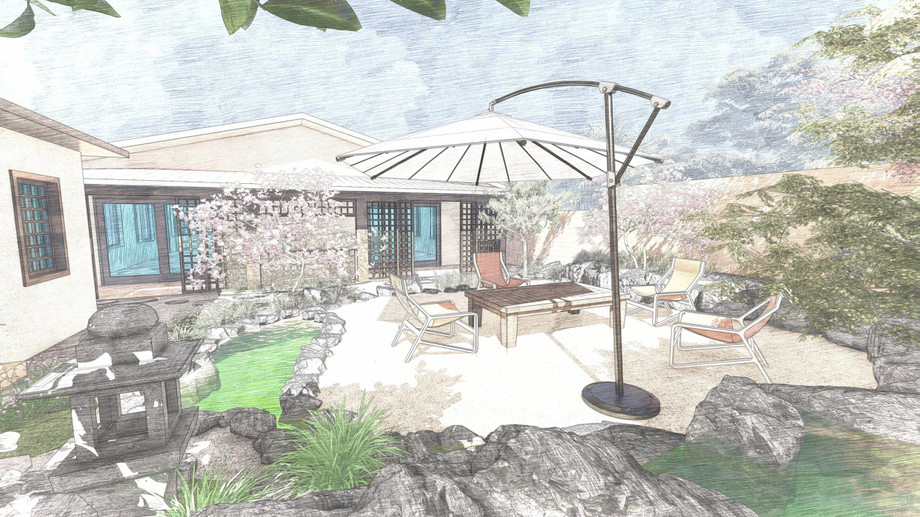In a world bustling with noise and distractions, finding moments of peace is more important than ever. One of the most timeless and enchanting ways to reconnect with tranquillity is by experiencing a Japanese garden. These carefully designed spaces combine nature, symbolism, and artistry to create environments of profound beauty and reflection.
Understanding the Essence of a Japanese Garden
Unlike other types of landscapes that may focus purely on aesthetics or function, a Japanese garden is designed to evoke deep emotions and an intimate connection with nature. Each element — from rocks to water to plants — is thoughtfully placed to tell a story, often inspired by Japanese philosophy and culture.
The Origins and Philosophy Behind Japanese Gardens
The tradition of the Japanese garden dates back over a thousand years, influenced by Shinto, Buddhist, and Taoist beliefs. Early gardens were often created at temples, designed as representations of paradise or sacred spaces for meditation.
Central to the philosophy of these gardens is the idea of “wabi-sabi” — finding beauty in imperfection and impermanence. Stones may be weathered, moss may creep over pathways, and water may flow unpredictably, all reflecting the natural cycle of life.
Core Elements of a Japanese Garden
A traditional Japanese garden incorporates specific elements, each with symbolic meaning:
- Rocks and Stones: Represent mountains or islands, providing structure and form.
- Water Features: Ponds, streams, and waterfalls symbolize purity and the flow of life.
- Plants and Trees: Carefully selected to represent the seasons and to frame views.
- Bridges: Often arched, they symbolize a journey or transition between worlds.
- Lanterns and Pagodas: Serve as focal points and enhance the spiritual atmosphere.
Every component of a Japanese garden is arranged with a clear purpose, encouraging mindfulness and appreciation of the natural world.
Types of Japanese Gardens
There are several distinct styles of Japanese gardens, each with its own character and intent:
- Karesansui (Dry Rock Garden): Often called a “Zen Garden,” it features raked gravel and minimal plants to inspire contemplation.
- Chaniwa (Tea Garden): Designed for the traditional tea ceremony, it includes stepping stones, water basins, and rustic architecture.
- Tsukiyama (Hill and Pond Garden): Recreates natural landscapes in miniature, using hills, ponds, and winding paths.
- Kaiyu-shiki (Stroll Garden): Intended to be enjoyed while walking, offering shifting views and surprises along the way.
Each style offers a different experience, yet all remain grounded in the principles of balance, harmony, and simplicity.
If you are fascinated by how outdoor environments can profoundly impact human experiences, you might find this detailed exploration on the power of thoughtful urban design services insightful. It highlights how intentional design fosters vibrant, meaningful spaces, much like the principles behind a traditional Japanese garden.
The Modern Appeal of Japanese Gardens
Today, the Japanese garden continues to capture hearts worldwide, not only in Japan but across continents. People are drawn to the calming energy and minimalist beauty these gardens offer. Whether incorporated into a private backyard, public park, or urban retreat, the Japanese garden brings timeless elegance and peace to any setting.
Modern designers often blend traditional elements with contemporary features, creating spaces that honor heritage while catering to today’s lifestyles. Sustainable practices, native plant integration, and creative adaptations ensure that these gardens remain relevant and cherished.
Tips for Creating Your Own Japanese Garden
If you dream of bringing the grace of a Japanese garden into your own space, here are a few foundational tips:
- Start Small: A Japanese garden can be as simple as a corner arrangement or a large, expansive design.
- Focus on Simplicity: Less is more. Choose a few meaningful elements rather than crowding the space.
- Select Appropriate Plants: Think of maples, azaleas, bamboo, moss, and pines.
- Incorporate Water: A pond, stream, or even a small basin can bring tranquility.
- Use Natural Materials: opt for stone, wood, and gravel over artificial options.
Working with a professional landscape designer experienced in Japanese aesthetics can help ensure authenticity and harmony in your garden.
Conclusion
A Japanese garden is more than just an arrangement of plants and stones; it is a living work of art that invites reflection, tranquility, and connection to nature. Whether you’re seeking to create a peaceful sanctuary at home or design a public space that inspires serenity, the influence of a Japanese garden can be profoundly transformative.
For those who wish to craft an authentic and breathtaking Japanese garden, partnering with experts is key. LASD Studio brings exceptional artistry, cultural understanding, and technical skill to every project. Explore the endless possibilities for your outdoor space by visiting lasdstudio.com — where tradition meets innovation in perfect harmony.

